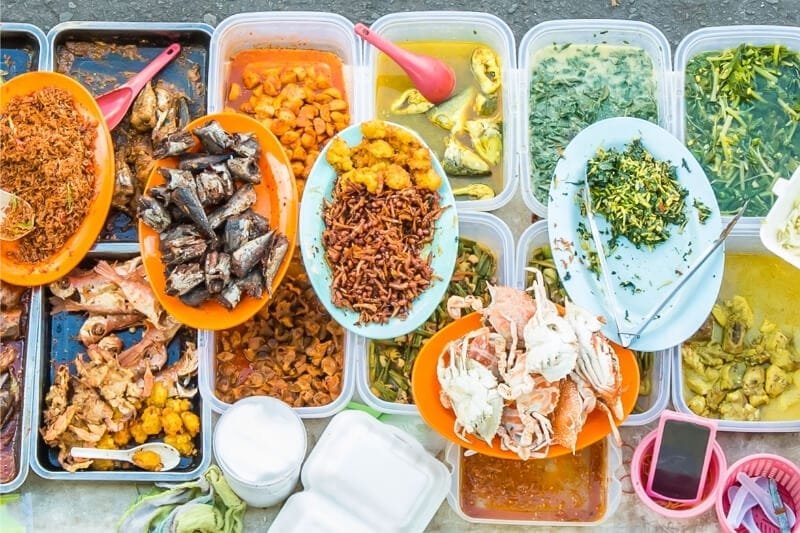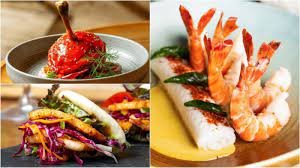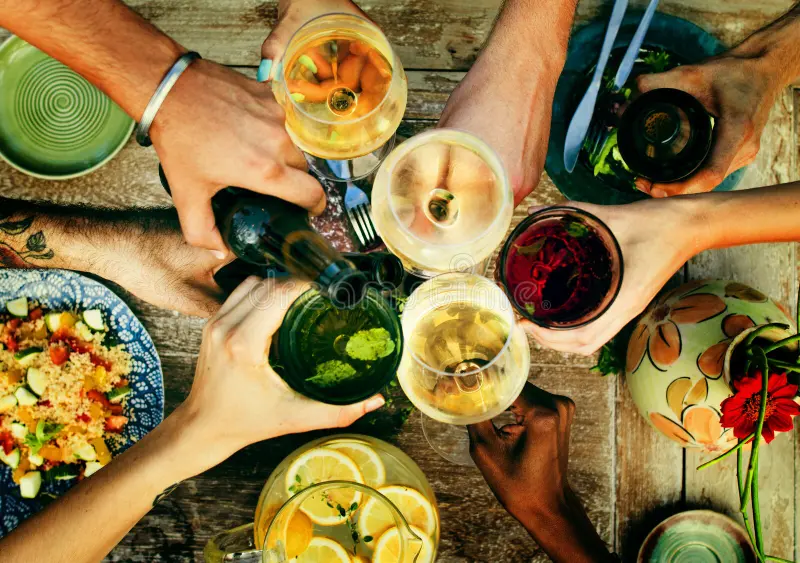Food and Drink A Global Journey Through Taste Culture and Wellness
Introduction
Food and drink are the foundation of human life. They nourish our bodies, comfort our souls, and serve as a bridge between people, places, and traditions. From ancient grains cooked over fire to high-tech molecular gastronomy, the evolution of food and drink reflects the journey of human civilization. In today’s globalized and health-conscious world, food and drink are more than necessities — they are powerful symbols of identity, wellness, celebration, and innovation.
A Historical Perspective
Food and drink have been central to human development since prehistoric times. Early humans were hunters and gatherers who relied on seasonal foods and local water sources. As agriculture emerged around 10,000 years ago, people began cultivating crops and domesticating animals, which led to more stable diets and the development of civilizations.
Every region developed its own food culture based on climate, resources, and trade. For example:
-
The Mediterranean region became known for olives, grapes, and wheat.
-
East Asia cultivated rice, soy, and tea.
-
Central and South America produced maize, beans, and chili peppers.
Spices, once more valuable than gold, played a major role in global exploration and trade. Food wasn’t just sustenance — it was power.
Cultural Significance of Food and Drink

Food and drink are deeply intertwined with culture and identity. Each dish tells a story, often passed down through generations. National cuisines reflect local ingredients, traditional methods, and cultural values.
-
In India, food is colorful, flavorful, and often influenced by religion, such as vegetarian diets in Hindu households.
-
In Japan, meals emphasize balance, aesthetics, and seasonality — such as sushi or miso soup.
-
In Mexico, the cuisine blends indigenous ingredients like corn and beans with Spanish influences, creating tacos, tamales, and mole.
Drinks, too, hold cultural importance. Tea ceremonies in China and Japan are not just rituals but forms of meditation and art. Coffee culture is essential in countries like Ethiopia, Italy, and Turkey, where it fosters community and conversation.
Meals are often social events, whether it’s a family dinner, a festival feast, or a wedding banquet. Food brings people together, celebrating life, love, and tradition.
Modern Food and Drink Trends
As societies evolve, so do eating and drinking habits. Today, the global food and beverage industry is shaped by several major trends:
1. Health and Wellness

People are increasingly mindful of what they consume. There’s a global shift toward:
-
Organic produce
-
Whole grains
-
Superfoods like chia seeds, quinoa, and kale
-
Low-sugar and low-fat options
-
Hydrating drinks like coconut water and herbal teas
Diets such as keto, vegan, gluten-free, and intermittent fasting are gaining popularity. Smoothies, green juices, and plant-based protein shakes have become staples for many.
2. Plant-Based and Vegan Eating
Driven by concerns over health, animal welfare, and the environment, plant-based diets are rapidly rising. Innovative meat substitutes like Beyond Meat and Impossible Foods are transforming burgers, sausages, and even seafood.
Vegan restaurants are thriving in urban centers, and supermarkets are stocked with dairy alternatives like almond milk, oat milk, and coconut yogurt.
3. Sustainability and Eco-Conscious Choices

Food production has a significant impact on the environment. As a result, consumers are seeking more sustainable choices, including:
-
Locally grown food
-
Seasonal produce
-
Eco-friendly packaging
-
Zero-waste cooking
Movements like “farm to table” and “slow food” promote mindful consumption and support local farmers.
4. Technology and Food Innovation
Technology is revolutionizing how we grow, prepare, and consume food. Examples include:
-
Smart kitchens with AI-enabled appliances
-
Meal delivery services and subscription boxes
-
Apps for calorie tracking and meal planning
-
Lab-grown meat and 3D-printed food
Robotics and automation are being introduced in restaurants and food factories, making processes faster and more consistent.
5. Global Fusion and Culinary Exploration

The internet and global travel have expanded people’s palates. Fusion cuisine — blending flavors and techniques from different cultures — is trending worldwide.
-
Korean BBQ tacos
-
Sushi burritos
-
Indian-style pizzas
These creative mashups represent the interconnected world of modern gastronomy.
The Role of Food and Drink in Social Life
Food is one of the most social aspects of human life. Shared meals create bonds, foster conversation, and build community.
In many cultures:
-
Guests are welcomed with food and drink as a sign of respect.
-
Celebrations are centered around special dishes (e.g., turkey on Thanksgiving, cake at birthdays).
-
Religious events include fasting and feasting, such as Ramadan in Islam or Passover in Judaism.
In professional settings, business deals are often made over lunch or dinner. In relationships, cooking together or going out for drinks are common ways to connect.
Food and Drink in Travel and Tourism

Culinary tourism is a growing sector. Travelers seek authentic food experiences that reflect the local culture. Popular activities include:
-
Street food tours
-
Cooking classes with local chefs
-
Wine and craft beer tastings
-
Visiting traditional markets
Food becomes a way to explore a destination’s history, geography, and customs.
Nutrition and Mental Health
There’s growing awareness of the connection between food and mental well-being. Nutrient-rich diets can help reduce stress, anxiety, and depression.
-
Omega-3 fatty acids in fish boost brain function.
-
Leafy greens are rich in magnesium, which supports mood.
-
Fermented foods like yogurt and kimchi improve gut health — now linked to emotional balance.
Staying hydrated is equally important. Water supports brain function, digestion, and energy levels. Herbal teas and infused water are popular alternatives to sugary drinks.
Challenges and Inequality in Food Access

Despite advancements, food insecurity remains a global issue. Millions lack access to clean water and nutritious meals. Factors include:
-
Poverty
-
Conflict and displacement
-
Climate change affecting agriculture
-
Food waste and supply chain inefficiencies
Governments and NGOs are working to reduce hunger and improve food systems through aid, education, and sustainable farming initiatives.
FAQ – Food and Drink
1. What is the importance of food and drink in daily life?
Food and drink provide the nutrients and hydration needed for the body to function. Beyond physical health, they also play important roles in culture, social life, and emotional well-being.
2. What are the current trends in food and drink?
Some of the most popular trends include plant-based diets, organic and sustainable food choices, functional beverages, global fusion cuisines, and technology-driven food delivery services.
3. How does food affect mental health?
Foods rich in nutrients like omega-3 fatty acids, magnesium, and probiotics can support brain health and reduce symptoms of anxiety and depression. A balanced diet can improve mood, energy levels, and mental clarity.
4. What is the role of technology in the food industry?
Technology has revolutionized food production, preparation, and delivery. Innovations include AI-powered kitchens, lab-grown meat, online food delivery platforms, and apps that offer personalized nutrition advice.
5. What is culinary tourism?
Culinary tourism is travel centered around experiencing a region’s food and drink culture. It includes activities like food tours, cooking classes, wine tasting, and visiting local markets and restaurants.
6. Why is sustainable eating important?
Sustainable eating reduces environmental impact, conserves resources, and supports ethical food production. It involves eating local, seasonal, and minimally processed foods, and reducing food waste and plastic use.
7. What are functional foods and drinks?
Functional foods and drinks offer health benefits beyond basic nutrition. Examples include probiotic yogurt, antioxidant-rich teas, and vitamin-infused water that support digestion, immunity, or energy.
8. What is fusion cuisine?
Fusion cuisine blends ingredients, flavors, or techniques from different cultures to create innovative dishes — like Korean tacos or sushi burritos — reflecting global culinary creativity.
Conclusion
Food and drink are more than biological needs — they are expressions of culture, lifestyle, and identity. From traditional recipes to modern food tech, from humble street eats to gourmet dining, the world of food and drink is vast and fascinating.
As we move forward, the focus is shifting to mindful consumption — eating for health, sustainability, and connection. Whether you’re savoring a homemade meal, exploring a new cuisine, or sipping on a nourishing drink, remember that food is not just what we eat — it’s who we are.

